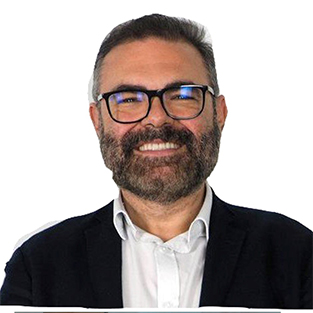
Successful completion of one of our projects in Guatemala
Successful completion of one of our projects in Guatemala Laura Núñez Muñoz More than 20 years of general experience and, for the last 15 years,


PhD in Molecular Biology, Executive MBA, and Expert in Promotion and Project Management of International R&D+I programmes, with extensive experience in R&D and Innovation management. Managing Director of European Funding projects promotion, preparation and management.
The Recovery, Transformation and Resilience Plan (RTRP) is a roadmap that aims to guide Spain in the recovery and modernization of its economy after the slowdown caused by the Covid 19 pandemic.
In order to achieve the desired economic and social transformation, this Plan is based on four fundamental pillars or axis: ecological transition, digital transformation, social and territorial cohesion and gender equality. Furthermore, for the RTRP to function fully and benefit the country, it is necessary that the actions carried out include gender equity; achieved by incorporating a gender perspective.
In this context, the Ministry of Equality launched two guides, one aimed to public entities (which are the ones that promote the projects within the RTRP) and the second one for private entities (which will execute the projects that will be finally selected). Among other things, this will help to reduce the social, labor, and economic gap between women and men; as well as to respond to the uneven impact that Covid-19 has had (since it has affected mostly women).
On its part, the Guide for Public Administrations aims to include the gender perspective in all the stages of a project until its final implementation.
In this respect, the most important phase is the proposal design and preparation, since here is when equal opportunities can be offered to both men and women, considering the needs and implications of each party. Furthermore, this action is particularly relevant when the submitted project has not as its main purpose inequality reduction, but despite its objective being different, it still incorporates this key element.
As for the Guide for private entities and partnerships (half public and half private), it is presented as an addendum to the above mentioned Guide and will serve to lead the entities that are going to implement the approved projects, to provide the steps to be followed to correctly incorporate the gender perspective ; and finally ,to achieve full equality between women and men.
These requirements must be implemented in any project, regardless of the axis in which they are classified.
Once the public organizations design and prepare the calls for projects to be launched (step 1), it will the turn for the entities, alone or in partnership, to design and present those projects (step 2), which must comply with the requirements previously verified by Government entities.
After having passed this first contact between entities, the Public Administration will select the most suitable projects presented by the companies (step 3).
The entities of the projects finally selected (step 4), will then start working on the implementation, monitoring and evaluation phases, which is when the actions that will finally determine whether the stipulated (or fixed) objectives are effectively met, will be executed I, that is, verification that equality between men and women is fully achieved.
Finally, the Public Administration will also carry out the required follow-up and evaluate each project (step 5).

Successful completion of one of our projects in Guatemala Laura Núñez Muñoz More than 20 years of general experience and, for the last 15 years,

PERTE for industrial decarbonisation approved PERTE for industrial decarbonisation approved The PERTE is approved with the aim of accompanying industry in its decarbonisation process to

Keys to efficient driving Enrique Roca Industrial Technical Engineer with specialization in Mechanics. He is currently Technical Manager in the Energy Efficiency and Sustainability unit
